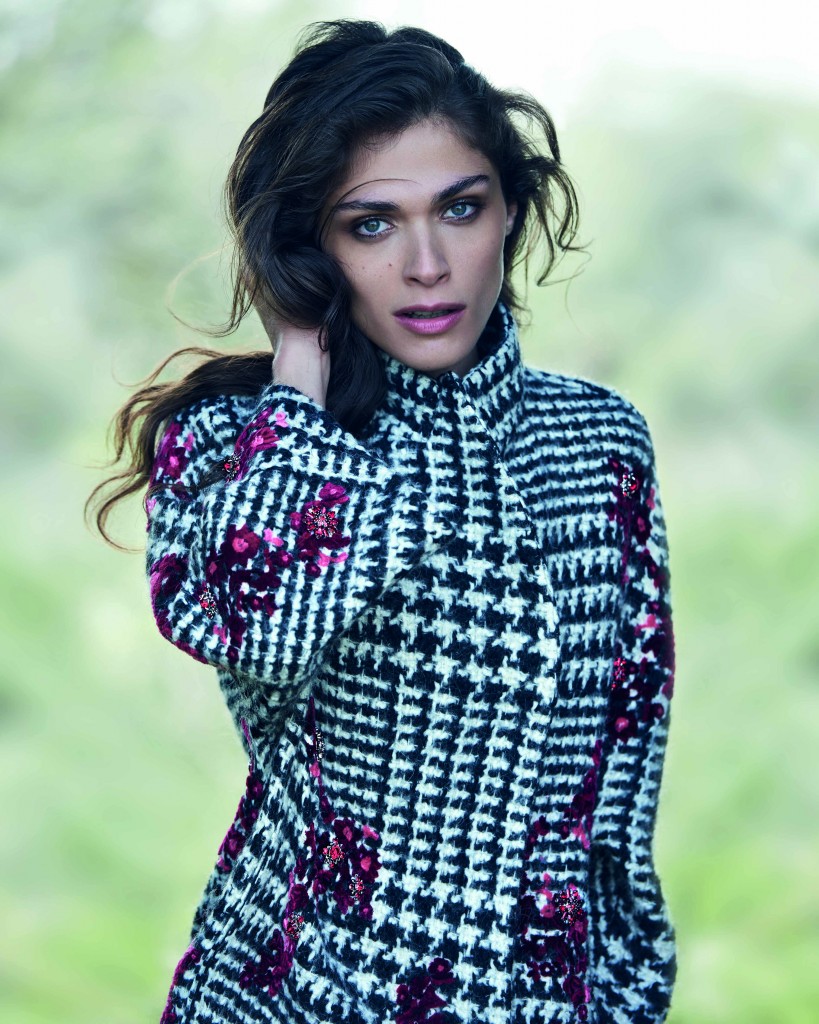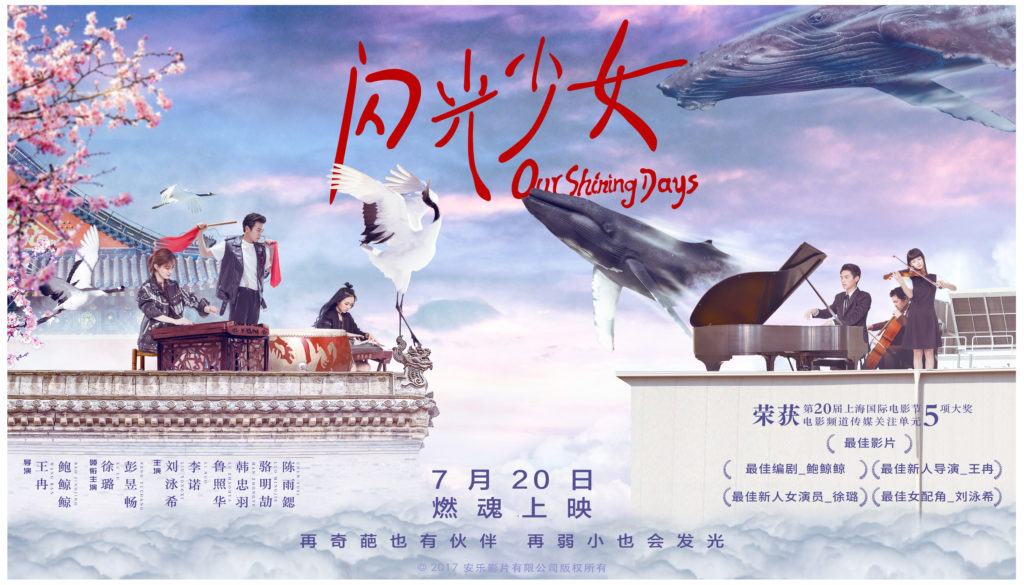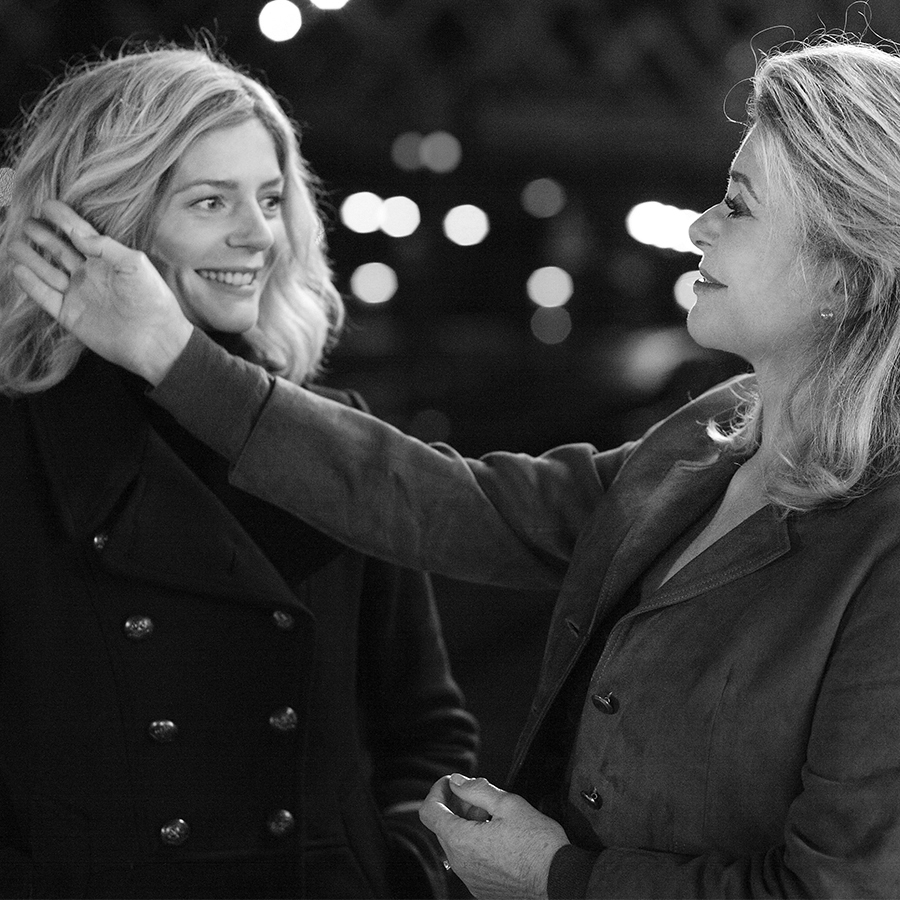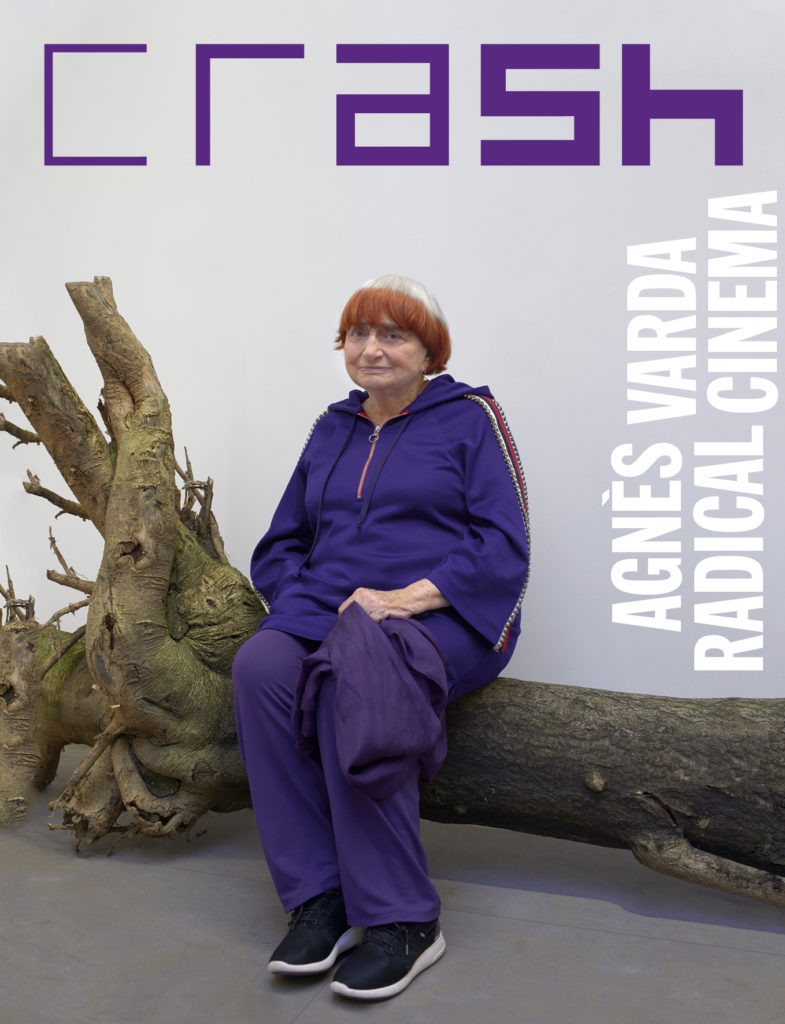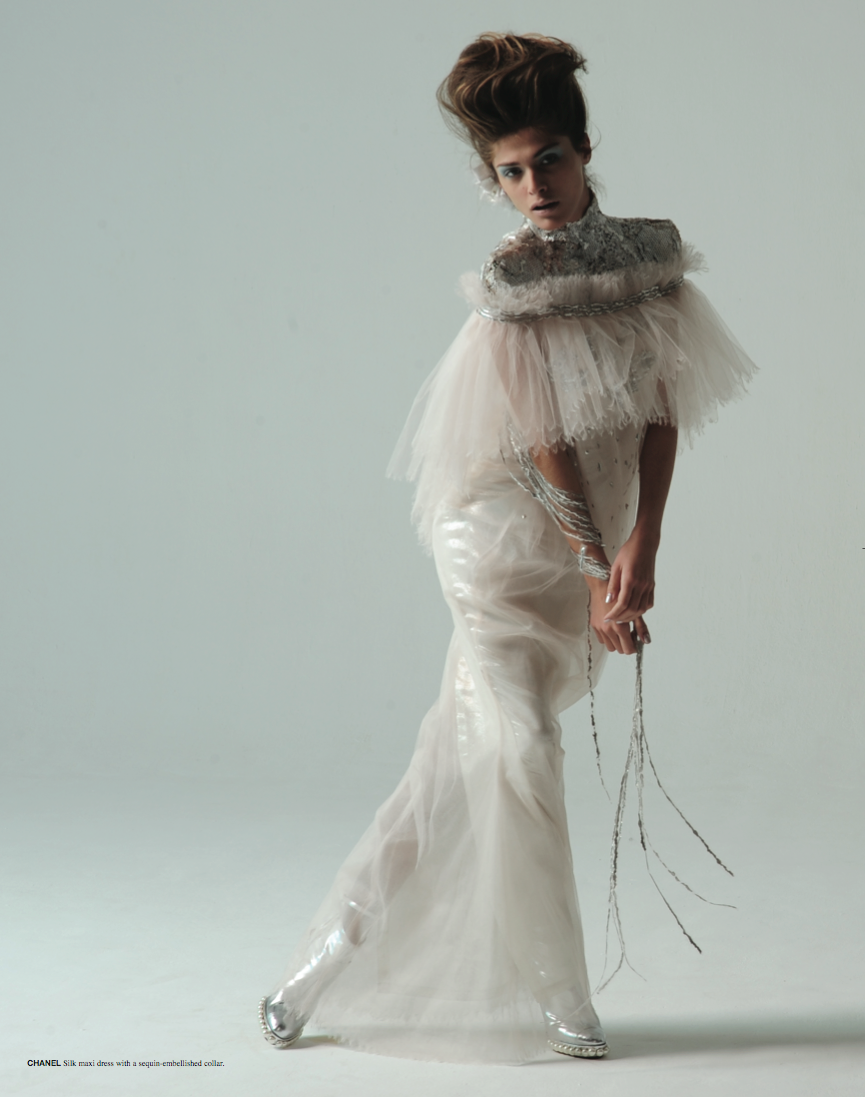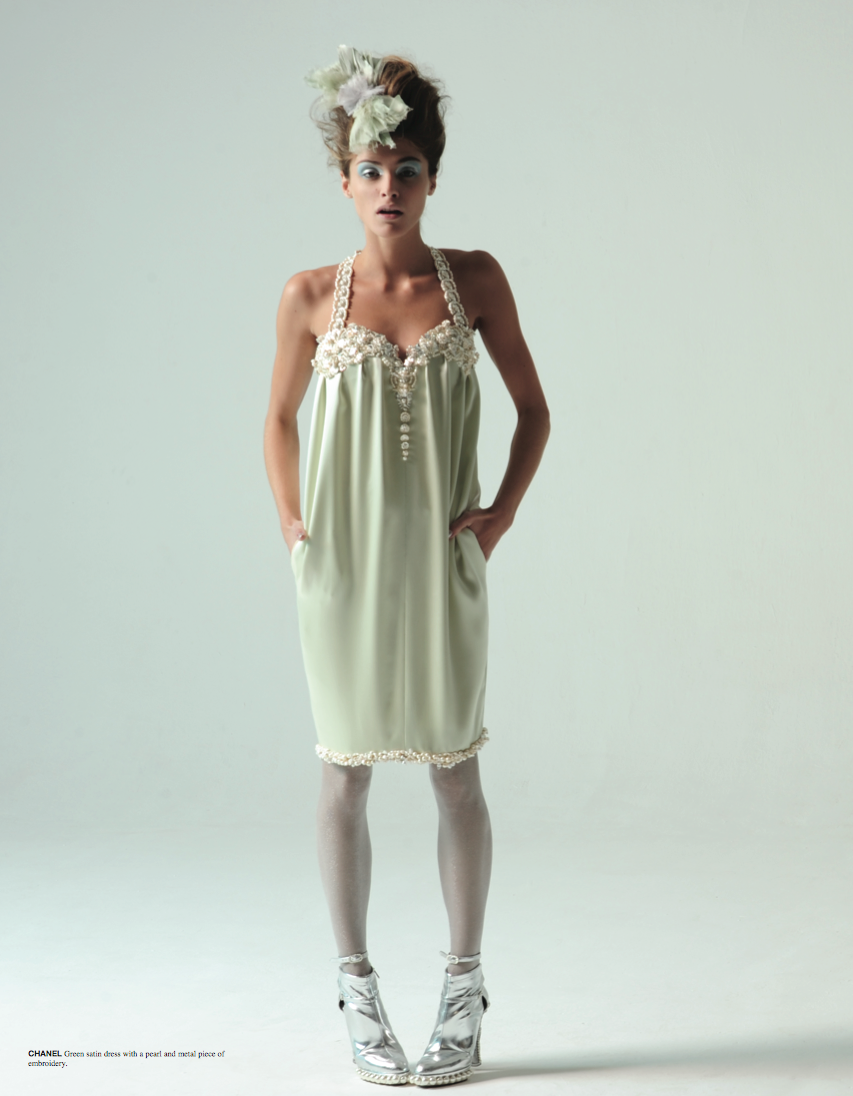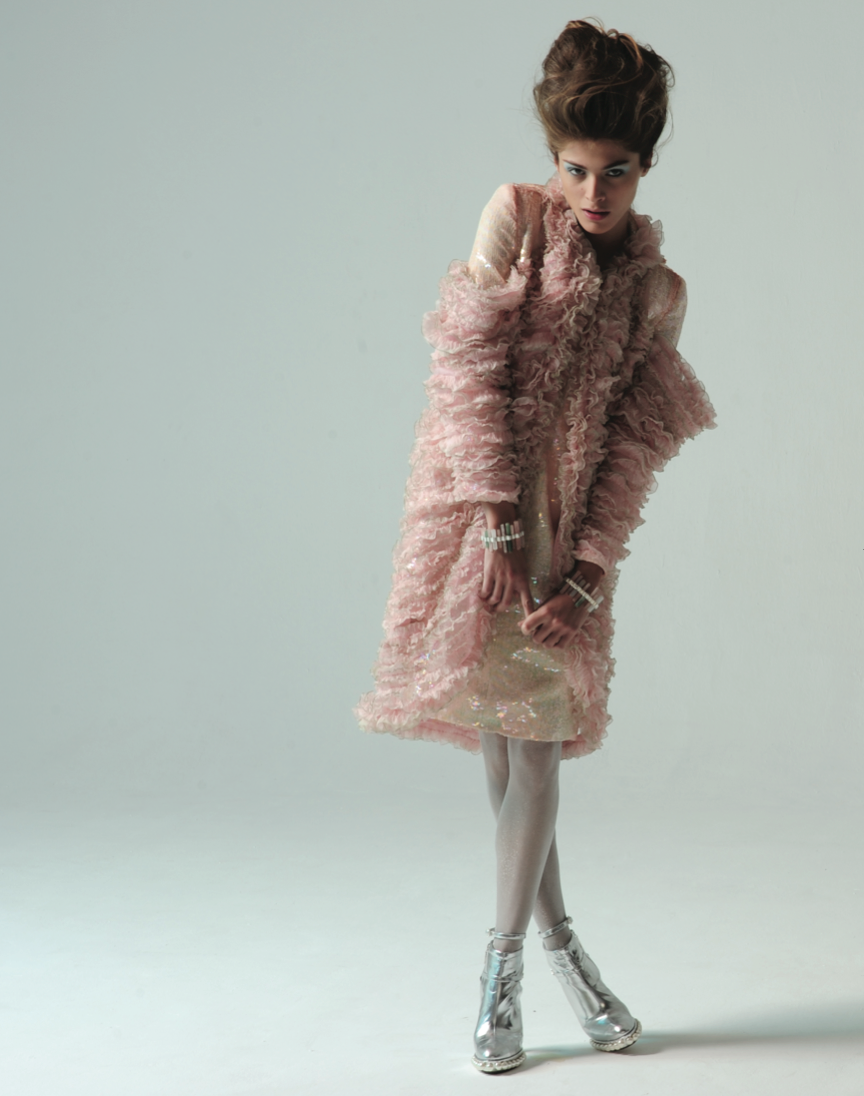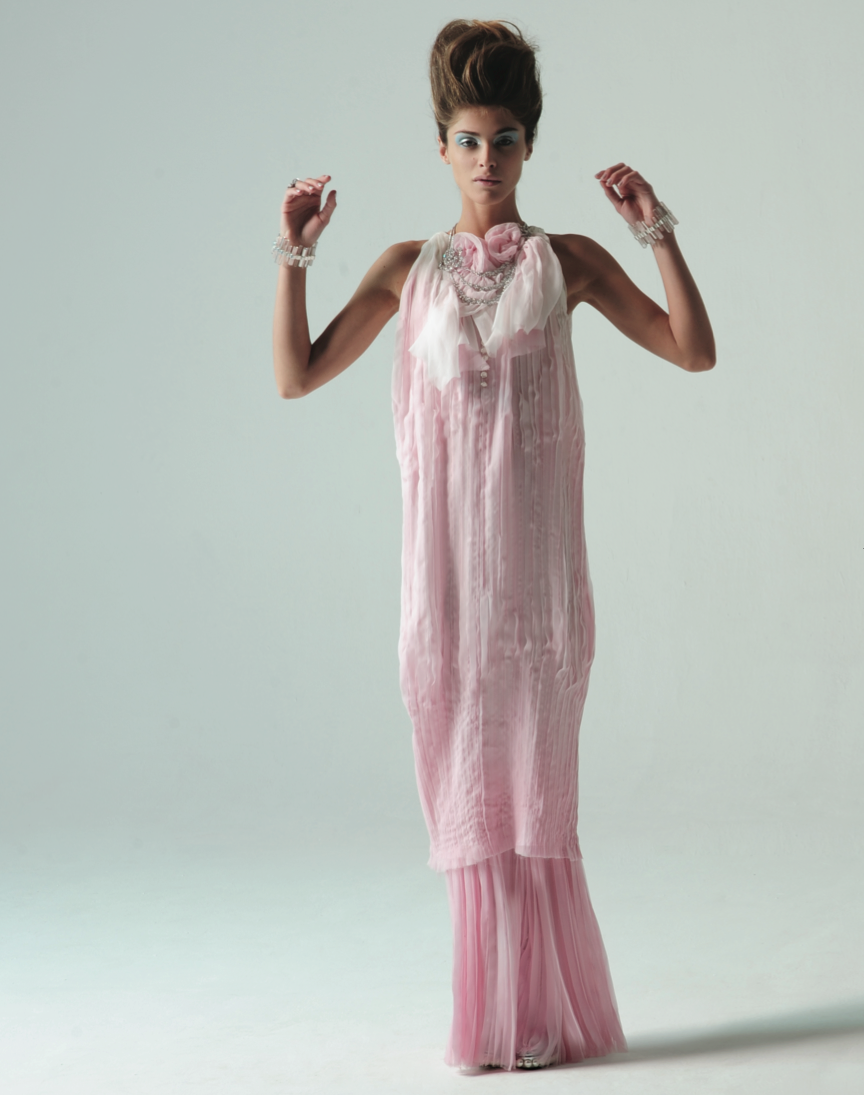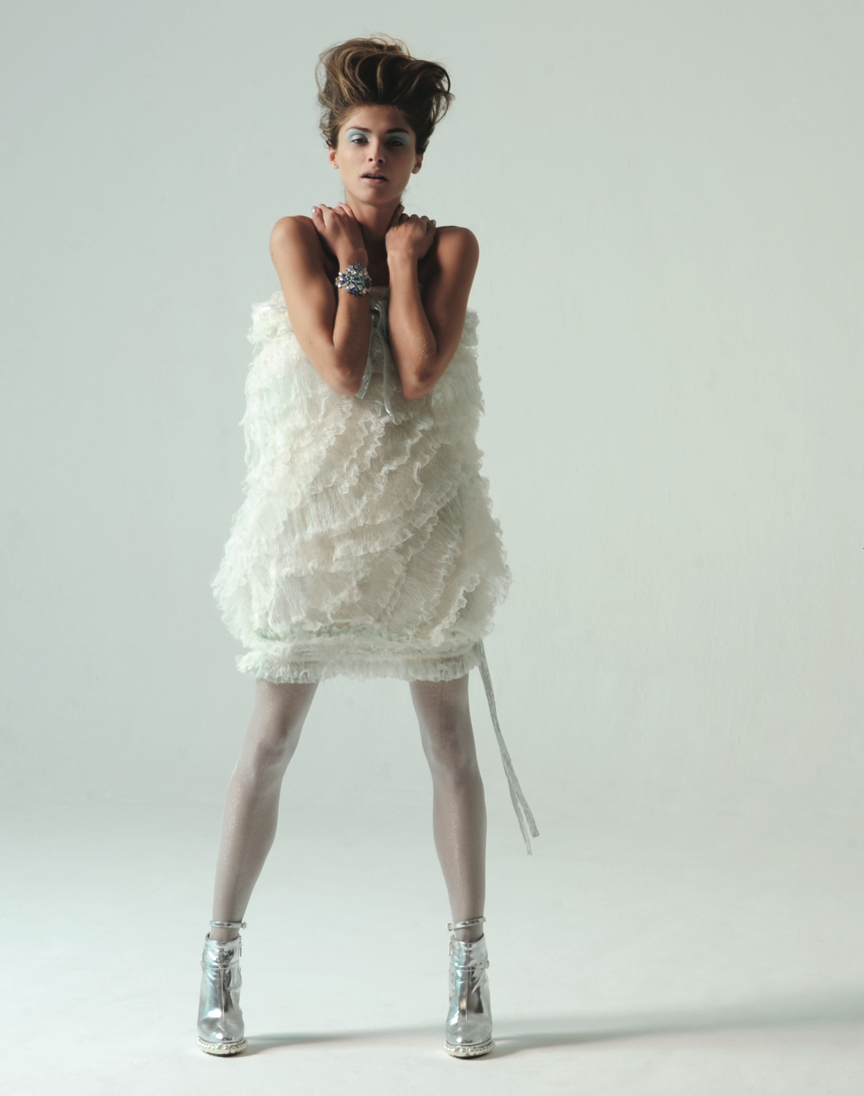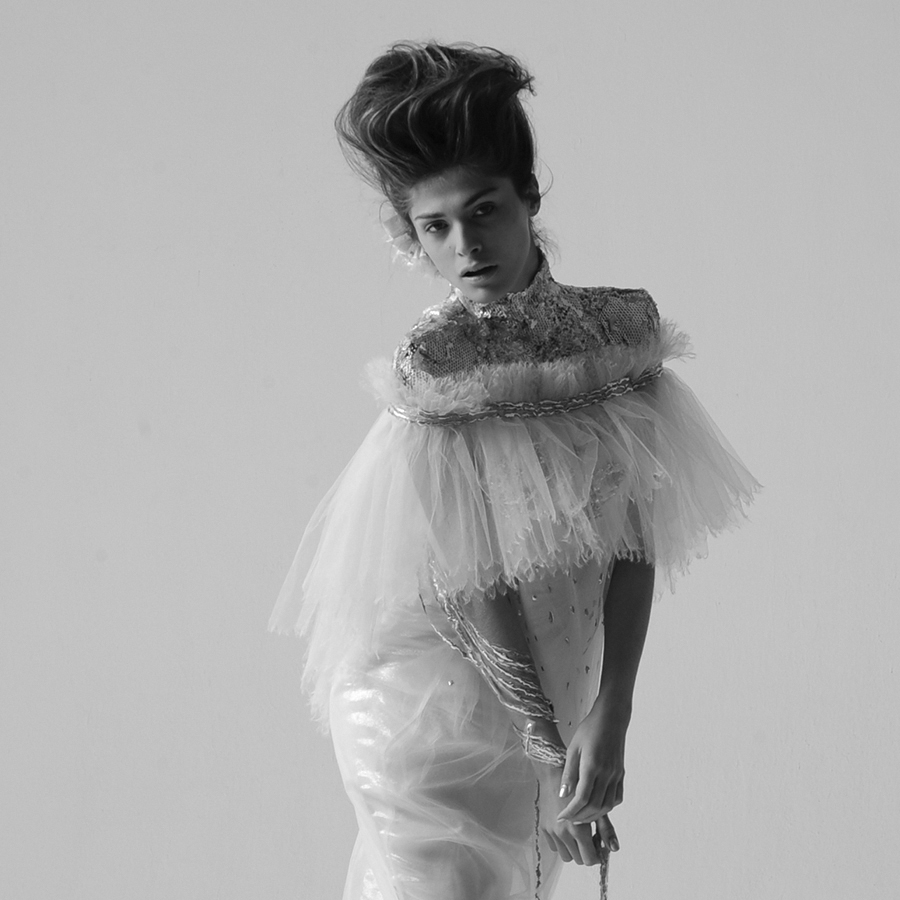
ELISA SEDNAOUI ON FASHION AND CINEMA
By Crash redaction
ELISA SEDNAOUI, OR THE STORY OF A PASSIONATE SOUL, FASCINATED BY EVERYTHING IN THE WORLD. EXTREMELY MATURE AND CONSCIOUS OF THE ATTENTION GIVEN HER BY PHOTOGRAPHERS AND DIRECTORS, SHE AVIDLY SAVORS IT ALL, WITH GENUINE ENTHUSIASM. ELISA COMES AND GOES BETWEEN ONE CONTINENT AND THE NEXT, STAYING LONGER IN EGYPT AND ITALY, LANDS FULL OF CHILDHOOD MEMORIES, AND NEW YORK, WHICH SHE RECENTLY ADOPTED. SHE GIVES HER TAKE HERE ON CHANEL HAUTE COUTURE.
YOU GOT YOUR START AS A MODEL…
Indeed; as my mother was both a model and an agent, I flew from one casting session to the next with her as a child. I was her little helper: for example, it was me who took all the models’ measurements… I was fourteen years old when one day, while we were in Paris, an agent asked me: why don’t you try to model as well? The fact that the suggestion came from someone outside the family was the trigger. However, I was intent on finishing school, because, originally, I wanted to become a diplomat. So I only modeled occasionally at first. After high school, I lived for six months between Paris, London, and New York, before finally settling in the latter. Although I had never acted or taken acting classes, I then shot my first film, Eastern Drift, with Sharunas Bartas.
HOW DID YOU TRANSITION FROM MODELING TO ACTING?
It started when I met in Paris with my current agent, Elizabeth Simpson, to ask for advice. I wanted to learn more about film and look into my potential in the field. I started as a model because, when you’re offered a chance to be in photos, travel, earn so much money in so little time, and meet so many interesting and different people, it’s almost indecent to say no. However, though the situation was great, I felt that, somewhere, I had more to offer, more talent to tap into. Elizabeth directed me toward the Cours Florent drama school, which I unfortunately couldn’t attend because I soon moved to New York. Shortly after, she told me that a Lithuanian director, whom I didn’t know but who was well known by the critics, was looking for someone for a role that he had originally written for Asia Argento, who was too busy to accept the part at the time. Since I had no experience, I was afraid that the part would be too hard for me. But I was in Paris the next day by chance, met Sharunas Bartas, and got the part. We shot the film in Lithuania, France, and on the Île-d’Yeu. He also filmed segments that didn’t involve my character in Russia. HOW DID YOU ADAPT TO SHOOTING? I mostly followed advice. I was lucky enough to start with a director who does a pure, uncompromising style of cinema: we didn’t have a script, for example. It was really difficult, because, at only nineteen, I suddenly had to play my first female role: a real challenge, which I also enjoyed even though it intimidated me at first.
ARE THERE ANY ARTISTS WHOM YOU PARTICULARLY APPRECIATE?
I really like Francesco Clemente, an Italian artist who has lived in New York for a long time, and has traveled widely in India. His portraits are magnificent; he’s got an incredible way of drawing eyes. I’m also passionate about Calder’s work, whose exhibition in Paris I loved; the simplicity of his work is powerful. That’s something I like in all fields, whether it’s fashion or architecture: less is more. In general, I prefer minimalism. It’s the same with film: as Sharunas Bartas told me, when you don’t know what to do, don’t do anything. I also admire the work of Martin Soto Climent, a very young Mexican artist who notably exhibited at the P.S. 1, a site run by the MoMA. He makes installations using objects that aren’t of any real value: window blinds, for example. I own one of them, which I mounted in my living room in New York. I also like Andy Warhol, and even more the movement that he began, which makes art accessible to the masses. And, lastly, I love Jackson Pollock: when I look at his work, there’s something in it that grabs me on a deep level.
HAVE YOUR TRAVELS BROUGHT YOU ANYTHING MEANINGFUL?
I now have the chance to fluently speak several languages: Italian, English, French, Arabic, and Spanish. Through travel, I learned to develop my ability to adapt. My father once brought me to one of his construction sites. He was working on a project in the middle of nowhere on the Sinai Peninsula for six months. So I lived for three weeks in a house that had been abandoned by the Bedouins, with no water, electricity, or telephone. Frankly, I’d be delighted to live like that again! Being disconnected from everything is such a powerful experience… The most important place for me is certainly Egypt, because I can really recharge when I’m there. There space, light, and energy there are unlike anything else and they make me feel good. New York is also a special city because it’s the one I chose to live in. I’m also particularly attached to Italy. I like Paris a lot, but I couldn’t live there right now, though I probably have more friends there than anywhere. Paris’s cultural and intellectual life is very rich, more so than in other countries: a lot of people attend exhibitions, see movies… However, the Parisian mentality isn’t compatible with my own.
WHAT PROJECTS ARE YOU CURRENTLY WORKING ON?
I’m currently working on a lead role in Italy, in a film adaptation of a Sandro Veronesi novel. Acting in my mother tongue would be a real delight for me: being able to play on words and having full power over the subtleties of a language is marvelous. It’s a shame there aren’t more interesting projects in Italy, the country where Federico Fellini and the others made incredible movies.







